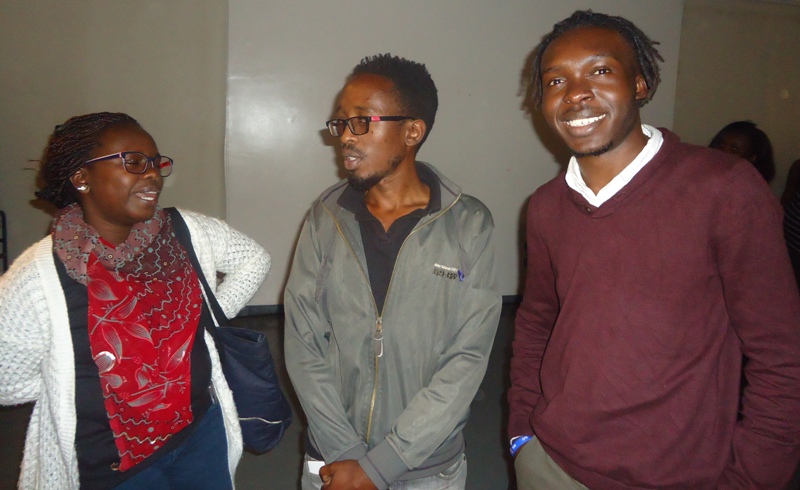Ogova Ondego
Published April 20, 2016
 If you live in an apartment in a Nairobi suburb, especially in the densely populated eastern part of the Kenyan capital, you are unlikely to come in contact with vegetation: trees, shrubs and herbs.
If you live in an apartment in a Nairobi suburb, especially in the densely populated eastern part of the Kenyan capital, you are unlikely to come in contact with vegetation: trees, shrubs and herbs.
RELATED: How Green Spaces Can Prevent Urban Centres from Turning into Concrete Jungles
But you need not despair as you can make up for what you miss in your concrete jungle with a visit to a public park; Nairobi Arboretum, Uhuru Park, Jeevanjee Garden, City Park or Uhuru Garden.
Better still, you can visit Nairobi Botanic Garden on Museum Hill, just a stone’s throw from the centre of the Kenyan metropolis.
Here, you will not only experience the benefits of a soft surface that is therapeutic, but are also likely to breathe in fresh air as your eyes feast on Kenya’s natural, historical and cultural heritage to the backdrop of a green environment.
Oh, did I mention ‘heritage’?
Yes, the Nairobi Botanic Garden is part of Kenya’s house of culture: Nairobi National Museum (NNM).

“This garden is home to some 600 indigenous and 100 exotic plant species and cultivars growing in 11 of the proposed 16 thematic displays,” says a guide as she takes us around the 20-year park “The museum presents Kenya’s history, nature, culture and contemporary art.”
RELATED:Improve Your Health at a Nairobi Public Garden
We, a team of children, youth and adults from seven countries, are visiting the institution as part of Lola Kenya Screen’s cultural programme during the 9th edition of the arts and media festival for children and youth in eastern Africa. We are sampling ‘Kenya’s history, nature, culture and contemporary art’ as we get to know one another ahead of the six-day festival that begins the following day.
 We, from Kenya, Uganda, Tanzania, Rwanda, Burundi, Nigeria and United States of America are ecstatic as we go through our full day’s programme at NNM, the flagship of the National Museums of Kenya (NMK).
We, from Kenya, Uganda, Tanzania, Rwanda, Burundi, Nigeria and United States of America are ecstatic as we go through our full day’s programme at NNM, the flagship of the National Museums of Kenya (NMK).
We are learning what we thought we knew but don’t about environment, plants, animals, humans and outdoor arts (theatre, painting, sculpture, landscape).
Referring to what we are going through as environmental education, terms such as ‘plant breeding’, ‘plant adaptation’, ‘ecology’, ‘ethno botany’, ‘economic botany’, ‘taxonomy’ and ‘biodiversity conservation’ roll off the tongue of our guide as cameras flash and copious notes are taken by some members of our party.
We take a walk on the Nature Trail, enter a traditional Kikuyu homestead, and view reptiles in the Snake Park.
Our guide informs us that NNM, that now has shopping and dining facilities (we suddenly feel hungry!), came into being in 1910; that the Botanic Garden, that sits some 1.5 Km from the Nairobi City Centre, adjacent to Hotel Boulevard, was created in 1995 through the collaboration of United Kingdom-based Royal Botanic Gardens in Kew and National Museums of Kenya; that the aims of the garden are ‘to enhance learning of plant science by using habitat and systematic displays’; that 11 of the 16 thematic displays proposed are in place.

Before heading out for lunch at Nairobi Safari Club, our home for the next six days, we have to go through the entire museum. We view displays of slave raiders, what Kenyans went through during colonialism and even the evolution of humanity. We also view contemporary art and listen to talks about using art for conservation.
RELATED:Why Safety and Security should be stressed in Urban Planning
We exit the institution. We shall be back in the afternoon to continue with the exciting tour of the organisation whose motto is ‘Where Heritage Lives’. We shall also take selfies and record videos on our smartphones.



